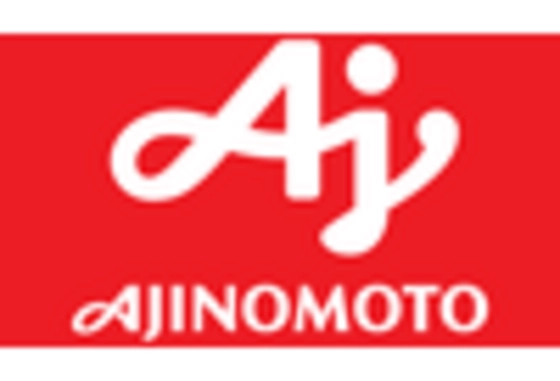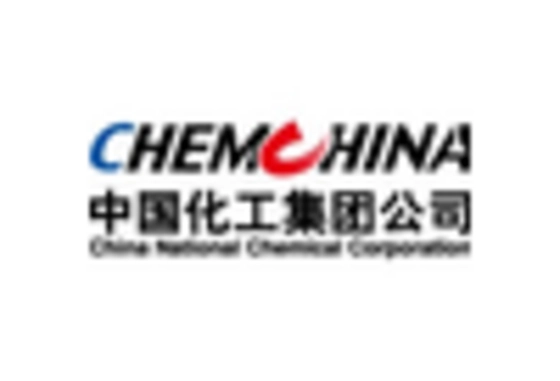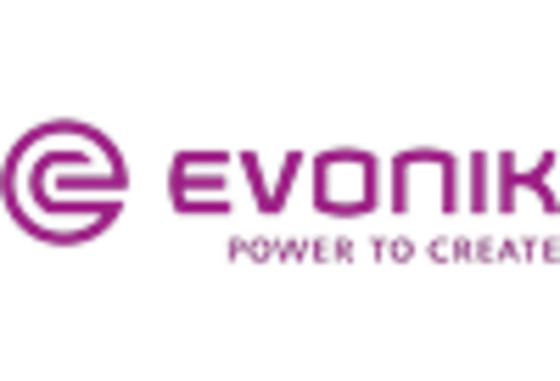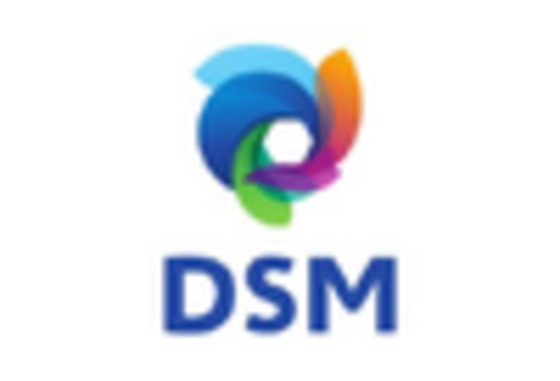Market Analysis
Lysine market (Global, 2024)
Introduction
Lysine is a chemical which has a very important place in the diet of animals and in the manufacture of medicines. The lysine contained in the diet is an essential nutriment for the growth and development of animals. The demand for high-grade animal products, caused by the increasing population and the growing health consciousness, has increased the need for lysine in animal husbandry. Also, the growing demand for lysine in the manufacture of food supplements for human beings and its potential therapeutic value have attracted the attention of both consumers and manufacturers. The lysine market is expected to be influenced by a number of factors, such as technological development, changes in regulations, and changes in consumers' tastes. The lysine industry is expected to grow in importance and to provide both opportunities and difficulties for those involved in its production and distribution.
PESTLE Analysis
- Political
- In 2024, the lysine market will be influenced by several political factors, including trade policies and regulations. The U.S. Department of Agriculture has imposed a tariff on certain imported agricultural products, which could affect the cost of raw materials used in lysine production. For instance, the rate of tariffs on certain feed ingredients is set at 15 %, which will affect the cost of lysine production. In addition, the European Union has introduced stricter regulations for animal feed additives. These regulations require products to meet new safety standards, which could limit market access for non-compliant products.
- Economic
- The economic situation in 2024 for the lysine market is shaped by fluctuations in the prices of raw materials and in the demand for the product. The average price of corn, the main raw material for lysine production, is expected to be around ten dollars per hundredweight, which is a ten percent increase over the previous year, mainly due to unfavorable weather conditions. The world's appetite for animal protein is expected to rise by three percent, which will increase the demand for lysine as a critical dietary amino acid.
- Social
- In 2024, social trends show a growing demand for animal products from sustainable sources. In the United States, for example, about 65% of consumers are willing to pay a premium for meat from sustainable sources, which makes livestock producers look for high-quality feed supplements such as lysine that meet these standards. The trend towards a vegetarian diet also affects the animal feed industry, which is trying to balance traditional feed with alternative protein sources. This leads to a higher demand for lysine as a supplement to optimize nutritional profiles.
- Technological
- In 2024 the production of lysine was revolutionized by advances in fermentation. Biotechnological innovation is a major source of wealth for the corporations. An estimated $200 million is spent each year on research and development in the field of microbial fermentation. Efficiency is expected to increase by as much as twenty per cent, reducing the cost of production and improving the environment. Artificial intelligence has been integrated into the logistics of lysine production, which has made it possible to optimize the use of resources and to reduce waste.
- Legal
- The legal environment in which the lysine market will operate in 2024 is characterized by strict regulations on food safety and the environment. The Food and Drug Administration (FDA) has formulated new regulations on the use of lysine in animal feed. All lysine products must be subjected to a rigorous testing for contamination. These regulations are expected to cost each company up to a million dollars in testing and certification. Also, the international trade agreements are being reviewed, which may lead to changes in the import and export of lysine.
- Environmental
- In 2024 the lysine market will be largely determined by the environment, particularly with regard to the question of sustainable production. It is estimated that the annual CO2 emissions from lysine production are around one and a half million tons. Many producers are therefore introducing more sustainable methods and technologies, with the aim of reducing these emissions by a quarter over the next five years. The use of water in lysine production is also being closely watched, with an average of 3,000 liters per ton of lysine produced.
Porter's Five Forces
- Threat of New Entrants
- The market for lysine is characterized by a medium barrier to entry, because of the high capital investment required in production facilities and technology. Moreover, economies of scale and brand loyalty favor the established companies and deter new entrants. However, developments in biotechnology and the fermentation of lysine may in the long run lower the barrier to entry.
- Bargaining Power of Suppliers
- The bargaining power of suppliers in the lysine market is relatively weak. There are many suppliers of the raw materials required for the production of lysine, which creates a highly competitive environment. Many of the lysine producers are also in a position to change suppliers without incurring any major costs, which reduces the power of suppliers even further.
- Bargaining Power of Buyers
- The buyers in the lysine market, especially the big feed manufacturers and the big farmers, have a great deal of bargaining power. They often buy in large quantities and can negotiate the price because there are many suppliers. The increasing demand for cheap and effective feed additives strengthens their bargaining power even further.
- Threat of Substitutes
- The threat of substitutes for lysine is a moderate one. There are, of course, other sources of lysine and of feed additives. But lysine is essential for animal nutrition, especially for poultry and pigs. In the future, however, the development of alternative protein sources and synthetic amino acids may pose a threat, depending on the market situation and the preferences of consumers.
- Competitive Rivalry
- The competition in the lysine market is high, with several large companies competing for market share. The industry is characterized by a continuous development of new products, aggressive price competition and continuous marketing efforts. In addition, the companies are investing in research and development to improve the efficiency of production and product quality, which further intensifies competition between the companies.
SWOT Analysis
Strengths
- High demand in animal feed industry due to increasing livestock production.
- Established production processes and technologies leading to cost efficiency.
- Strong market presence of key players ensuring competitive pricing.
Weaknesses
- Dependence on raw material prices, which can be volatile.
- Limited awareness of lysine benefits in emerging markets.
- Potential regulatory challenges affecting production and distribution.
Opportunities
- Growing trend towards protein-rich diets boosting demand for lysine.
- Expansion into untapped markets in developing regions.
- Innovations in production methods to enhance sustainability and reduce costs.
Threats
- Intense competition from alternative amino acids and feed additives.
- Economic downturns affecting livestock farming profitability.
- Potential trade restrictions impacting global supply chains.
Summary
The lysine market in 2024 will be characterized by strong demand from the feed industry and established production efficiencies. However, the market will also face challenges, such as raw material price fluctuations and regulatory constraints. Opportunities for growth lie in expansion into emerging markets and in the use of innovations for sustainable development. Competition from other products and macroeconomic uncertainty will continue to pose major threats to the market.

















Leave a Comment